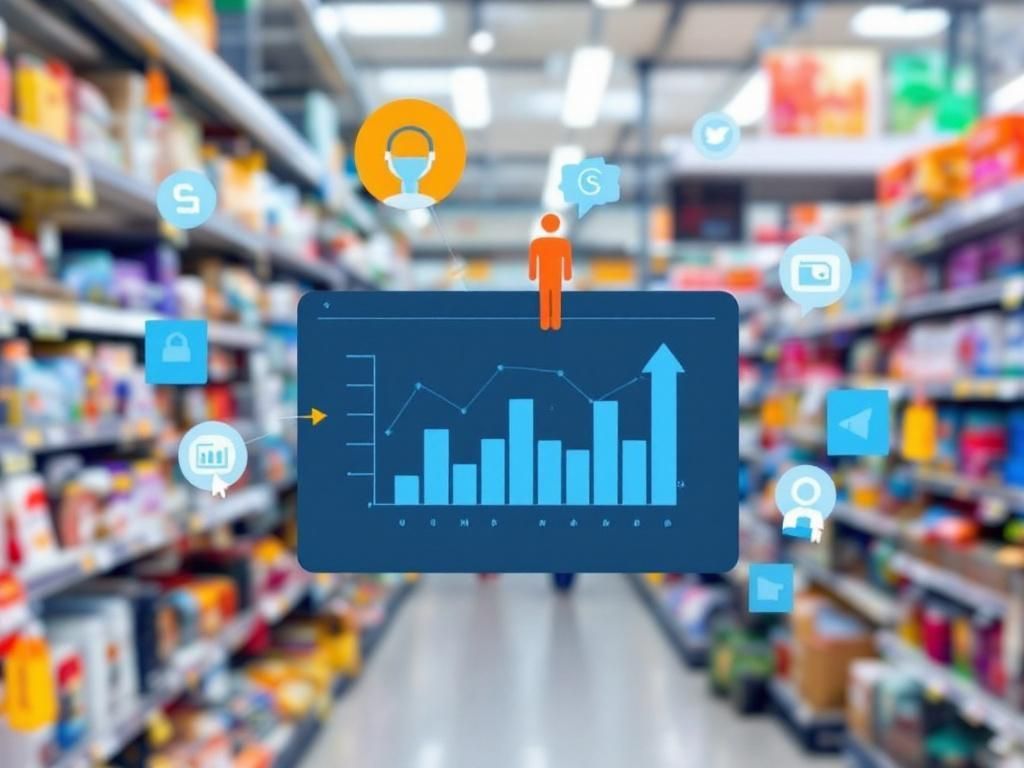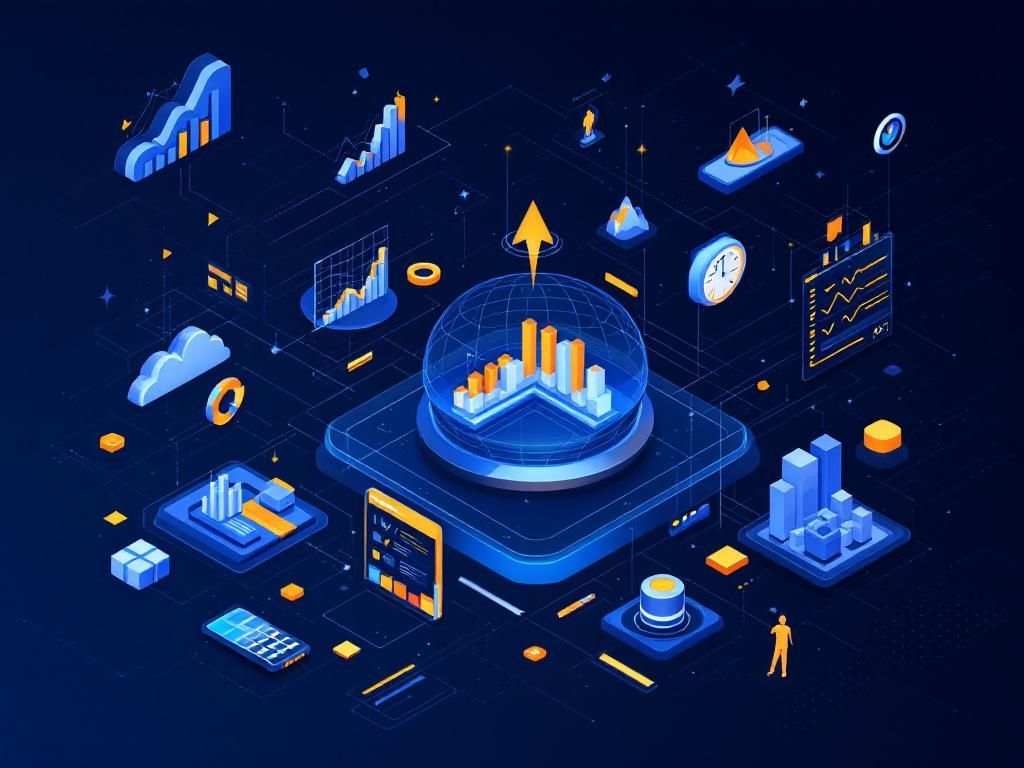In today’s fast-paced retail environment, the ability to leverage data has become a crucial differentiator for businesses looking to stay ahead of the competition. Predictive analytics tools have emerged as powerful allies for retailers, enabling them to forecast trends, optimize inventory, and enhance customer experiences. This article delves into the world of predictive analytics in retail, exploring its benefits, tools, and best practices for implementation.
Understanding Predictive Analytics
Predictive analytics refers to the use of statistical algorithms and machine learning techniques to identify the likelihood of future outcomes based on historical data. In the context of retail, this can mean anticipating customer behavior, sales trends, and inventory needs. The power of predictive analytics lies in its ability to convert vast amounts of data into actionable insights.
Key Components of Predictive Analytics
- Data Collection: Gathering data from various sources, including sales records, customer interactions, and market trends.
- Data Analysis: Applying statistical methods to analyze the collected data and identify patterns.
- Modeling: Building predictive models using machine learning algorithms to make forecasts based on the analyzed data.
- Validation: Testing the models to ensure their accuracy and reliability before implementation.
Benefits of Predictive Analytics in Retail
The integration of predictive analytics into retail operations offers several advantages that can lead to increased efficiency and profitability:
1. Improved Inventory Management
Through predictive analytics, retailers can optimize their inventory levels by forecasting demand more accurately. This reduces instances of overstocking or stockouts, ultimately leading to better cash flow management.
2. Enhanced Customer Segmentation
Predictive models can analyze customer data to segment shoppers based on various attributes such as buying behavior, preferences, and demographics. This allows retailers to tailor marketing strategies, leading to higher engagement and conversion rates.
3. Personalized Marketing Efforts
By understanding customer preferences, retailers can create personalized marketing campaigns that resonate with individual shoppers. Predictive analytics can suggest the right products to the right customers at the right time.
4. Optimized Pricing Strategies
| Pricing Strategy | Description |
|---|---|
| Dynamically Adjusted Pricing | Utilizing real-time data to adjust prices based on demand fluctuations. |
| Competitive Pricing | Analyzing competitors’ pricing to adjust strategy and remain competitive. |
| Promotional Offers | Forecasting the effectiveness of promotional offers to drive sales without sacrificing profit margins. |
Popular Predictive Analytics Tools for Retail
Several predictive analytics tools are available in the market that can help retailers harness the power of data effectively. Here are some noteworthy tools:
1. IBM Watson Analytics
IBM Watson offers powerful predictive analytics capabilities, enabling retailers to analyze customer data and operational metrics to gain insights that drive business decisions.
2. SAP Predictive Analytics
This tool provides robust forecasting features along with machine learning capabilities that can enhance retail operations through accurate predictive modeling.
3. Microsoft Azure Machine Learning
Microsoft Azure allows businesses to build, deploy, and manage predictive analytics models efficiently, making it a preferred choice for many retailers.
4. SAS Analytics
SAS offers a suite of advanced analytics tools specifically designed for the retail sector, focusing on customer experience and operational efficiency.
Implementing Predictive Analytics in Retail
To effectively implement predictive analytics, retailers must follow a structured approach:
Step 1: Define Objectives
Identify specific business goals you want to achieve through predictive analytics, such as improving sales forecasting or customer segmentation.
Step 2: Data Quality Assessment
Ensure that the data collected is accurate, relevant, and comprehensive. Poor-quality data can lead to misleading insights.
Step 3: Choose the Right Tools
Select predictive analytics tools that fit your retail needs and budget. Consider factors such as ease of use, integration capabilities, and support.
Step 4: Build Models
Develop predictive models based on historical data and tested algorithms. This is where data scientists and analysts can play a crucial role.
Step 5: Continuous Improvement
After deploying the models, continually monitor their performance. Adapt strategies and models based on results to ensure optimal performance.
Challenges in Predictive Analytics
While the benefits are substantial, retailers may encounter challenges when implementing predictive analytics:
Data Privacy Concerns
As retailers collect more data, they must also manage data privacy and compliance with regulations such as GDPR.
Integration Issues
Integrating predictive analytics tools with existing systems can be complex and requires careful planning.
Skill Gaps
The demand for data science skills often exceeds supply, making it difficult for retailers to find qualified personnel.
Future Trends in Predictive Analytics
The landscape of predictive analytics is continuously evolving. Here are some trends to watch:
1. Increased Use of AI and Machine Learning
AI-driven analytics will enable more sophisticated predictive models, improving accuracy and efficiency.
2. Real-Time Analytics
Retailers will increasingly rely on real-time data to make instantaneous decisions, enhancing responsiveness to market changes.
3. Greater Personalization
As predictive analytics become more advanced, the level of personalization in marketing and customer service will reach new heights.
Conclusion
Predictive analytics tools are revolutionizing the retail industry by empowering businesses with insights that drive informed decision-making. From optimizing inventory to enhancing customer relationships, the potential applications are vast and impactful. As technology continues to advance, retailers that embrace predictive analytics will be better equipped to navigate the complexities of the market and provide exceptional experiences for their customers.
FAQ
What are predictive analytics tools in retail?
Predictive analytics tools in retail are software solutions that analyze historical data to forecast future trends, customer behaviors, and sales patterns, enabling retailers to make informed decisions.
How can predictive analytics improve retail operations?
Predictive analytics can improve retail operations by optimizing inventory management, personalizing marketing strategies, and enhancing customer experiences through targeted recommendations.
What types of data are used in retail predictive analytics?
Retail predictive analytics uses various types of data, including sales data, customer demographics, purchase history, market trends, and seasonal factors to generate accurate forecasts.
Can predictive analytics tools help with inventory management?
Yes, predictive analytics tools can significantly help with inventory management by predicting demand, reducing stockouts, and minimizing excess inventory, leading to cost savings.
What are the benefits of using predictive analytics in retail marketing?
Using predictive analytics in retail marketing allows businesses to identify customer segments, tailor promotions, and increase conversion rates by delivering personalized experiences.
Are there specific industries within retail that benefit most from predictive analytics?
Yes, industries such as fashion, electronics, and grocery retail can benefit greatly from predictive analytics due to their dynamic inventory needs and diverse customer preferences.




